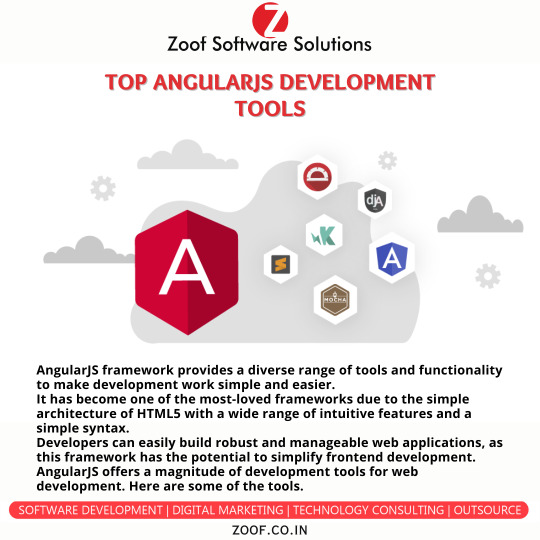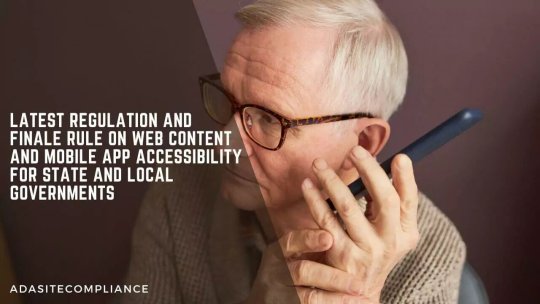#web analysis tools
Note
what are ur thoughts on the winners room trope?
ooooo okay surface level analysis: i like winner’s room fics :)
etwas tieferes: i think it’s cool that it’s (afaik) unique to hockey fandom and i enjoy the way it integrates a lot of unspoken rules in hockey with desire/makes them a physical/tangible reality… also the narrative potentials/world-building it opens up can be fun because there’s not really a set of rules for the “winner’s room” trope. are there in-universe rules? who gets chosen? who’s exempt? who gets to pick? where’s it going down? is it the entire room or one guy? what if your (ex)boyfriend is on another team? does somebody need to be taught a lesson or do you need to remind someone who got traded you still love them? also, most important, winner’s room gives you the chance to put two random-ass guys you saw interact for 0.002 seconds and went “hmmm. interesting” about into a Situation and i love that
#yeah buddy!! i love answering questions!!! unironically i have so many opinions!!!!#refraining from putting this in the main text but had to go: yeah who doesn’t love a good g*ngb*ng#it also doesn’t just have to be a bunch of dudes fucking though per always: i think winner’s room fics can bring up interesting dialogues#about the idea of bodily autonomy and self-sacrifice or sacrifice in sports#every fic can utilize a trope their own way so you might have lighter versions or heavier versions and#tw: sa#dub-con/CNC elements which. given the truth of SA and abuse in hockey it’s valuable to have tools to explore and i feel like i need to#address that when i talk about this? obvi dead dove do not eat for some fics re:winner’s room but i think a lot of them do talk about#control and power to some extent if you were to do a deep literary analysis. which we don’t need to. sometimes it’s enough to read a fic one#time because you liked the main pairing and didn’t know SHIT about the flyers and then come back to it years later and absolutely lose your#goddamn mind about the fact that actually you DID know about travis konecny before you thought you did and at one point there were all these#guys that you now know and love who were just like. random fuckers in the sides of the fic. i tend to do that a lot bc i will read for#nearly everything (if i love u. i will read your works even if i don’t know anything about the fandom and also i am always willing to jump#on new ships) so also tangentially i think winner’s room fics are a lot of fun because you can see a lot of different interactions between a#lot of guys like not only is it this guy and this guy but also this guy and that guy and these two interacting around the sacrifice etc etc#tangled web many layers und so weiter. not sure if any of that makes sense but also i’m gonna tag for mentions of sa/wjc/hockey canada stuff#i don’t even really know if winner’s room functions as well even in other sports bc of the Team Identity in hockey & cultural context#liv in the replies#winner’s room can be layered with SO many other kinks and tropes and aus and also just like. i like it & that’s probably all i needed to say#also obvi re: rules for trope there aren’t ever any there’s just some popular variations and we can kinda see some of those forming#but i’m not even sure if winner’s room has its own tag on the archive? i’d have to check i know i have a few saved in my bookmarks at least#OH also if you made it this far. wasn’t sure if this was like a ‘do u got recs’ or a ‘what’s your moral stance’ or ‘hey is this something ur#into’ so. good faith good vibes y’all and if this wasn’t what u meant please elaborate the question i do love answering things#ty for the ask!!!!#for the record i do watch hockey like the leonardo dicaprio pointing meme finding milliseconds of interaction to go HAHA GAY NARRATIVE about
4 notes
·
View notes
Text

ADA Standards For Accessible Design
ADA Site Compliance specializes in implementing ADA standards for accessible design on your digital platforms!
#Websites and mobile app accessibility#web and mobile app accessibility#Americans with Disabilities Act (ADA)#ADA standards#Title II of the ADA#online services and mobile applications#state and local governments#accessibility standards#ADA standards for accessible design#ADA-compliant websites#WCAG 2.1 Level AA#WCAG 2.1 AA standards#WCAG standards#WCAG 2.1 Level AA accessibility standards#WCAG Version 3.0#digital content#digital resources#free accessibility scan#ada compliance tools#ada compliance analysis#website accessibility solutions#ADA site compliance#ADASiteCompliance#adasitecompliance.com
0 notes
Text
Bash Script: Calculate before/after 2: Calculate Harder
As an update, or an evolution of my earlier script that did some simple math for me, I’ve made one that will full-on test a URL while I’m making changes to see what the impact performance is of my updates.
$ abtesturl.sh --url=https://example.com/ --count=10Press any key to run initial tests...Initial average TTFB: 3.538 secondsPress any key to re-run tests...Running second test...Second average…

View On WordPress
#automation tools#Bash Scripting#data analysis#performance testing#report generation#script updates#server response time#TTFB measurement#web development tools#website optimization
0 notes
Text

industrial reports development tool
#industrial reporting solution#industrial reporting software#industrial reports development company#reporting tool for industrial automation#reporting software for industrial automation#Scada reporting software#report generation in Scada#best reporting software#Scada report generation#best reporting tools#industrial automation reporting tool#reporting tool for Scada#web based reporting tools#web based reporting software#automated reporting and data analysis software#Batch Reporting Application#Data Log Reporting Application
0 notes
Text
0 notes
Text
#proxies#proxy#proxyserver#residential proxy#automation#ecommerce#data insights#data intеgration challеngеs#web scraping techniques#web scraping services#web scraping tools#industry data#datascience#data analytics#market analysis#shopping
0 notes
Text







Top AngularJS Development Tools
AngularJS development tools are software applications that aid developers in building, testing, and debugging web applications using the AngularJS framework. They provide features like code editing, live reloading, component inspection, and performance analysis to streamline the development process and enhance productivity.
.
.
➡️Check out the post to learn more about them.
➡️Let us know if you want to know more points in the comment section below
👉Do not forget to share with someone whom it is needed.
👉Let us know your opinion in the comment down below
👉Follow @Zoof Software Solutions for more information
➡Grow your business with us!
.
.
✔️Feel free to ask any query at [email protected]
✔️For more detail visit: https://zoof.co.in/
#Top AngularJS Development Tools#AngularJS development tools are software applications that aid developers in building#testing#and debugging web applications using the AngularJS framework. They provide features like code editing#live reloading#component inspection#and performance analysis to streamline the development process and enhance productivity.#.#➡️Check out the post to learn more about them.#➡️Let us know if you want to know more points in the comment section below#👉Do not forget to share with someone whom it is needed.#👉Let us know your opinion in the comment down below#👉Follow @Zoof Software Solutions for more information#➡Grow your business with us!#✔️Feel free to ask any query at [email protected]#✔️For more detail visit: https://zoof.co.in/#AngularJS#AngularJSDevelopment#javascript#application#developers#coder#angular#angularjs#angulardeveloper#programmer#angularjsdevelopmenttools#AngularJSTools#angularframework#AngularJSFramework
1 note
·
View note
Text
#website#website analysis#website checker#get more info#web analytics#seotips#seo tools#free seo tools#free seo audit
0 notes
Text
Often when I post an AI-neutral or AI-positive take on an anti-AI post I get blocked, so I wanted to make my own post to share my thoughts on "Nightshade", the new adversarial data poisoning attack that the Glaze people have come out with.
I've read the paper and here are my takeaways:
Firstly, this is not necessarily or primarily a tool for artists to "coat" their images like Glaze; in fact, Nightshade works best when applied to sort of carefully selected "archetypal" images, ideally ones that were already generated using generative AI using a prompt for the generic concept to be attacked (which is what the authors did in their paper). Also, the image has to be explicitly paired with a specific text caption optimized to have the most impact, which would make it pretty annoying for individual artists to deploy.
While the intent of Nightshade is to have maximum impact with minimal data poisoning, in order to attack a large model there would have to be many thousands of samples in the training data. Obviously if you have a webpage that you created specifically to host a massive gallery poisoned images, that can be fairly easily blacklisted, so you'd have to have a lot of patience and resources in order to hide these enough so they proliferate into the training datasets of major models.
The main use case for this as suggested by the authors is to protect specific copyrights. The example they use is that of Disney specifically releasing a lot of poisoned images of Mickey Mouse to prevent people generating art of him. As a large company like Disney would be more likely to have the resources to seed Nightshade images at scale, this sounds like the most plausible large scale use case for me, even if web artists could crowdsource some sort of similar generic campaign.
Either way, the optimal use case of "large organization repeatedly using generative AI models to create images, then running through another resource heavy AI model to corrupt them, then hiding them on the open web, to protect specific concepts and copyrights" doesn't sound like the big win for freedom of expression that people are going to pretend it is. This is the case for a lot of discussion around AI and I wish people would stop flagwaving for corporate copyright protections, but whatever.
The panic about AI resource use in terms of power/water is mostly bunk (AI training is done once per large model, and in terms of industrial production processes, using a single airliner flight's worth of carbon output for an industrial model that can then be used indefinitely to do useful work seems like a small fry in comparison to all the other nonsense that humanity wastes power on). However, given that deploying this at scale would be a huge compute sink, it's ironic to see anti-AI activists for that is a talking point hyping this up so much.
In terms of actual attack effectiveness; like Glaze, this once again relies on analysis of the feature space of current public models such as Stable Diffusion. This means that effectiveness is reduced on other models with differing architectures and training sets. However, also like Glaze, it looks like the overall "world feature space" that generative models fit to is generalisable enough that this attack will work across models.
That means that if this does get deployed at scale, it could definitely fuck with a lot of current systems. That said, once again, it'd likely have a bigger effect on indie and open source generation projects than the massive corporate monoliths who are probably working to secure proprietary data sets, like I believe Adobe Firefly did. I don't like how these attacks concentrate the power up.
The generalisation of the attack doesn't mean that this can't be defended against, but it does mean that you'd likely need to invest in bespoke measures; e.g. specifically training a detector on a large dataset of Nightshade poison in order to filter them out, spending more time and labour curating your input dataset, or designing radically different architectures that don't produce a comparably similar virtual feature space. I.e. the effect of this being used at scale wouldn't eliminate "AI art", but it could potentially cause a headache for people all around and limit accessibility for hobbyists (although presumably curated datasets would trickle down eventually).
All in all a bit of a dick move that will make things harder for people in general, but I suppose that's the point, and what people who want to deploy this at scale are aiming for. I suppose with public data scraping that sort of thing is fair game I guess.
Additionally, since making my first reply I've had a look at their website:
Used responsibly, Nightshade can help deter model trainers who disregard copyrights, opt-out lists, and do-not-scrape/robots.txt directives. It does not rely on the kindness of model trainers, but instead associates a small incremental price on each piece of data scraped and trained without authorization. Nightshade's goal is not to break models, but to increase the cost of training on unlicensed data, such that licensing images from their creators becomes a viable alternative.
Once again we see that the intended impact of Nightshade is not to eliminate generative AI but to make it infeasible for models to be created and trained by without a corporate money-bag to pay licensing fees for guaranteed clean data. I generally feel that this focuses power upwards and is overall a bad move. If anything, this sort of model, where only large corporations can create and control AI tools, will do nothing to help counter the economic displacement without worker protection that is the real issue with AI systems deployment, but will exacerbate the problem of the benefits of those systems being more constrained to said large corporations.
Kinda sucks how that gets pushed through by lying to small artists about the importance of copyright law for their own small-scale works (ignoring the fact that processing derived metadata from web images is pretty damn clearly a fair use application).
1K notes
·
View notes
Text
Americans With Disabilities Act (ADA)

Latest Regulation And Finale Rule On Web Content And Mobile App Accessibility For State And Local Governments
In a significant advancement for digital inclusivity, Attorney General Merrick B. Garland has enacted a critical update under Title II of the Americans with Disabilities Act (ADA). This new regulation compels state and local governments to ensure their websites and mobile app accessibility for individuals with disabilities.
Considering the integral role of digital platforms in providing access to services such as emergency responses, healthcare, voting, and public transit, the lack of accessibility could significantly prevent disabled individuals from accessing necessary services.
This rule clarifies governmental bodies’ responsibilities and highlights the imperative for businesses to adjust, even amidst evolving compliance landscapes.
ADA Site Compliance works to help companies comply with regulatory mandates. With a dedicated team that monitors regulation updates, we ensure businesses confidently maintain websites that meet current accessibility standards.
Statements from Justice Department Officials
Attorney General Merrick B. Garland: Emphasized the rule’s role in fulfilling ADA’s promise for equal participation. He stated that by establishing definitive digital accessibility standards for state and local governments, they support the ADA’s mission of ensuring full and equal participation for people with disabilities. He also commended the diligent efforts of the Civil Rights Division in implementing this rule.
Acting Associate Attorney General Benjamin C. Mizer highlighted the commitment to making digital platforms usable for everyone to participate fully in society.
Assistant Attorney General Kristen Clarke described the rule as groundbreaking, noting that it removes barriers that have historically excluded Americans with disabilities, and ensures equal access to essential online government services like voting and public benefits.
Importance of Web and Mobile App Accessibility
As state and local governments increasingly digitize their services, the accessibility of their web and mobile platforms becomes crucial. Inaccessible websites and applications can exclude individuals with disabilities from accessing vital services.
For example, visually impaired individuals often need screen readers to navigate websites and applications. Governmental sites posting crucial public information in images without alternative text (“alt text”), is inaccessible to blind users.
Such digital barriers can prevent disabled persons from performing essential activities such as securing mail-in ballots, obtaining tax information, or engaging in community events.
The latest regulation aims to guarantee individuals with disabilities have full access to state and local government online services, programs, and activities. This rule also clarifies steps governments take to adhere to ADA standards, ensuring inclusivity and equal access for every community member.
Title II of the Americans with Disabilities Act (ADA)
Title II of the ADA mandates that all services, programs, and activities provided by state and local governments are accessible to individuals with disabilities.
This extensive requirement encompasses everything from adoption services to zoning regulations and includes both online services and mobile applications managed by state and local authorities.
The rule ensures that individuals with disabilities can fully access and benefit from public services, promoting a more inclusive society with an improved quality of life for disabled individuals nationwide.
This includes:
Making public transportation details accessible to visually impaired users, Enabling the deaf or hard of hearing to participate in online educational courses,
Aiding those with manual dexterity issues in navigating web-based services.
Overview of State and Local Government Functions:
State and local governments are essential providers of numerous public services, including:
Offices administering social benefits like food assistance
Educational facilities
Law enforcement agencies at state and municipal levels.
Judicial systems of local and state courts.
Offices overseeing state and local electoral processes.
Public medical facilities
Community resources like parks, recreational facilities, and public transportation systems.
Accessibility standards under Title II apply to all entities within state and local governments, including their various departments, agencies, special purpose districts, Amtrak, and commuter authorities.
Furthermore, state and local governments contracting with third-party organizations, like non-profits managing drug treatment programs, must ensure these entities adhere to Title II’s accessibility standards.
What Constitutes a Rule or Regulation?
Rules or regulations are formal directives issued by a government agency, from laws enacted by Congress. Following the enactment of the ADA, the Department was authorized to develop regulations to articulate the responsibilities outlined in Title II and Title III of the ADA. Typically, these regulations consist of the regulatory text and an appendix.
The Process of Developing a Rule
The Department formulated this rule through a method known as “notice and comment rulemaking.” The process starts with declaring a Notice of Proposed Rulemaking (NPRM), serving the regulation’s initial draft and proposed requirements, and inviting public feedback.
The Department modified the proposed rule based on the NPRM feedback. Detailed descriptions of the public feedback and rule adjustments are in the rule’s appendix.
What are technical standards?
Technical standards are detailed criteria defining accessibility requirements. For instance, the ADA Standards for Accessible Design include specifications like minimum width for doorways to ensure physical accessibility in buildings and ADA-compliant websites.
Requirement for State and local government websites
This regulation covers all web content handled by state or local governments and must conform to WCAG 2.1, Level AA, including content administered by external contractors.
Example: If a county’s website displays a list of local parks and operating hours, it must adhere to WCAG 2.1, Level AA for accessibility, even if a third-party service provider developed and updated the site.
Web content includes text, images, audio, videos, and documents on the internet.
Requirement for State and Local Government Mobile Apps:
Mobile apps used by state and local governments must conform to WCAG 2.1, Level AA standards. It includes all mobile apps provided or accessible by state or local governments, and external parties.
Mobile apps are software applications specifically designed for use on smartphones and tablets. Developed by the World Wide Web Consortium, WCAG standards make web content universally accessible.
Example: Consider a mobile app developed by a city facilitating public parking payments. The app must comply with the WCAG 2.1, Level AA accessibility standards, no matter if the city or a private company manages it.
Going Beyond Standard Compliance with WCAG 2.1, Level AA
State and local governments have the leeway to adopt web content and mobile apps extending beyond the minimum requirements of WCAG 2.1, Level AA.
This provision for “equivalent facilitation” allows using alternative designs, methods, or technologies, if they offer accessibility and usability equal to or greater than mentioned by the standard.
This flexibility is intended to accommodate the adoption of future, potentially more stringent standards while ensuring continued accessibility for individuals with disabilities.
Example: For instance, a state parks department might implement WCAG Version 3.0 for its new mobile app for booking campsite reservations, if it offers better or equivalent accessibility compared to WCAG 2.1, Level AA.
Specific Exceptions to the Rule Explained
There are various situations where there are exceptions to digital content conforming with the rule. They include:
Archived Web Content:
This applies to outdated or unused content stored in archives, such as old reports or documents, that remain unchanged since archiving. However city council minutes and documents created after the compliance deadline must adhere to accessibility standards.
Even PDFs with up-to-date data on county park maps must conform, regardless of archival status.
Pre-existing Conventional Electronic Documents:
This applies to documents like PDFs or Word files on government digital platforms created before the compliance date and not updated or essential for current use.
However, documents posted or updated after the established compliance deadline do not qualify for exemptions. Active-use documents for accessing government services, irrespective of publication date do not qualify either.
Third-Party Content:
Content posted by third parties without a contractual or official arrangement with the government, which the government cannot modify is exempt. However, content directly posted or managed by the government like calendars developed by external companies, updates made by a government vendor, and message boards must meet WCAG 2.1, Level AA standards.
Individualized Documents:
Applies to personal documents like water bills and documents about specific individuals or accounts available in a secure, password-protected format. They can be challenging for immediate accessibility, especially for recipients without specific disability requirements.
Preexisting Social Media Posts:
This includes all social media posts made before the compliance date. However, if a visually impaired person requests information about a social media image from 2023, the government must provide an accessible description for effective communication.
Conclusion
The new regulation marks a significant step forward in ensuring that all individuals, regardless of disability, have equal access to digital resources provided by state and local governments.
This move aligns with the ADA’s long-standing commitment to inclusivity and modernizes public services to be more accessible, enhancing civic engagement and participation across the community.
ADA Site Compliance works to help companies comply with regulatory mandates. With a dedicated team that monitors regulation updates, we ensure businesses confidently maintain websites that meet current accessibility standards. Get your FREE ACCESSIBILITY SCAN here!
#Websites and mobile app accessibility#web and mobile app accessibility#Americans with Disabilities Act (ADA)#ADA standards#Title II of the ADA#online services and mobile applications#state and local governments#accessibility standards#ADA standards for accessible design#ADA-compliant websites#WCAG 2.1 Level AA#WCAG 2.1 AA standards#WCAG standards#WCAG 2.1 Level AA accessibility standards#WCAG Version 3.0#digital content#digital resources#free accessibility scan#ada compliance tools#ada compliance analysis#website accessibility solutions#ADA site compliance#ADASiteCompliance#adasitecompliance.com
0 notes
Text

By applying innovation and insightful📈 cycles to advertising-related information📰, organizations can comprehend what drives buyer activities, refine their marketing campaign efforts and upgrade their profit from speculation.
#social media analytics#swot analysis#marketing analytics#web analytics#analytics#analysis#analytical#marketing tools
0 notes
Text

industrial reports development tool india
#industrial reporting solution#industrial reporting software#industrial reports development company#reporting tool for industrial automation#reporting software for industrial automation#Scada reporting software#report generation in Scada#best reporting software#Scada report generation#best reporting tools#industrial automation reporting tool#reporting tool for Scada#web based reporting tools#web based reporting software#automated reporting and data analysis software
0 notes
Link
Web analytics tools are tools website that enable website owners and managers to monitor the performance of their website visitors.
They can gather and analyze data on which pages are visited, how long visitors stay on each page, what types of pages are visited, and which keywords are used on the pages. This data can be used to improve the website’s design and functionality, as well as to determine which marketing campaigns are most effective.
There are numerous web analytics tools available, each with its own set of benefits and drawbacks. Google Analytics, Adobe Analytics, and Omniture are some of the more popular tools. Each has its own set of attributes. Here we discuss about.
#web analytics#web traffic analysis#web tools#google analytics alternative#small seo tools#email validation#email validator
0 notes
Text
#free seo tools#seo#free seo#celebrities#developers & startups#illustration#fashion#photography#television#pets#web series#free seo audit#free seo analysis
0 notes
Text
i have a bit of a hot take: "you have to read novels to improve your writing" is technically, literally true insofar as you're talking about, like, prose structure and style. however, if you're already satisfied with your prose itself, i do not think that's true and i think prose writing sincerely benefits from a multidisciplinary approach that one might get from studying writing across art forms other than novels.
comics, film, television, video games, web-based unfiction like ARGs, concept albums, and pretty much any other narrative art i can't think of right now--they're all fertile ground for developing your understanding of character work, framing, pacing, establishing symbolism and other motifs, setting work, pretty much everything i would consider the fundamental building blocks of narrative fiction. you can learn just as much from picking apart the narrative structure and choices in your favorite manga as you can from doing the same with your favorite novel.
more than that, i think taking a multidisciplinary approach to studying fiction can result in better, more interesting novels--breaking away from your medium of choice allows you to think about art using different lenses entirely and examine your own medium in new ways. studying a TV show could give you insight into how serial, episodic writing differs structurally from trad published novels, and could allow you to take a fresh structural approach on writing a series of novels. studying a comic might cause you to think about your choices of visuals and visual framing, and to be intentional about your "directorial style" in-text as much as you are intentional about your prose style. et cetera and so on and so forth!
i do appreciate where the sentiment "you have to read novels to improve your own writing" is coming from--i mean, for one thing, i agree that the best art tends to come from a genuine enthusiasm for the medium you're working in--but quite frankly, narrative fiction is narrative fiction. we're all working with the same basic toolkit, there's just different ways to use those tools based on medium.
full disclosure: i, as an author, am not a huge reader of novels. i get through 2-4 novels a year, on average. i am, however, a voracious enthusiast of multimedia web-based fiction, comics, animation, and television, and i do the vast bulk of my artistic criticism and analysis in those mediums. i do study prose through the novels i read, but on the whole, even my prose improvement tends to come from studying poetry (something that is painfully obvious in my writing at times, and is not to everyone's taste). don't get me wrong--i am not saying i produce outstanding quality work that should be compared to that of lifelong professionals or anything, but my writing is generally acceptable, and i continue to make marked improvements over time--because my course of study is intentional, regardless of medium.
tl;dr: narrative is narrative, if you set out with the intention to understand what makes a narrative tick, it doesn't matter what medium you're studying, you're still learning.
55 notes
·
View notes
Text
"As countries around the world begin to either propose or enforce zero-deforestation regulations, companies are coming under growing pressure to prove that their products are free of deforestation. But this is often a far from straightforward process.
Take palm oil, for instance. Its journey from plantations, most likely in Indonesia or Malaysia, to store shelves in the form of shampoo, cookies or a plethora of other goods, is a long and convoluted one. In fact, the cooking oil or cosmetics we use might contain palm oil processed in several different mills, which in turn may have bought the raw palm fruit from several of the many thousands of plantations. For companies that use palm oil in their products, tracing and tracking its origins through these obscure supply chains is a tough task. Often it requires going all the way back to the plot level and checking for deforestation. However, these plots are scattered over vast areas across potentially millions of locations, with data being in various states of digitization and completeness...
Palmoil.io, a web-based monitoring platform that Bottrill launched, is attempting to help palm oil companies get around this hurdle. Its PlotCheck tool allows companies to upload plot boundaries and check for deforestation without any of the data being stored in their system. In the absence of an extensive global map of oil palm plots, the tool was developed to enable companies to prove compliance with regulations without having to publicly disclose detailed data on their plots. PlotCheck now spans 13 countries including Indonesia and Malaysia, and aims to include more in the coming months.
Palm oil production is a major driver of deforestation in Indonesia and Malaysia, although deforestation rates linked to it have declined in recent years. While efforts to trace illegally sourced palm oil have ramped up in recent years, tracing it back to the source continues to be a challenge owing to the complex supply chains involved.
Recent regulatory proposals have, however, made it imperative for companies to find a way to prove that their products are free of deforestation. Last June, the European Union passed legislation that prohibits companies from sourcing products, including palm oil, from land deforested after 2020. A similar law putting the onus on businesses to prove that their commodities weren’t produced on deforested land is also under discussion in the U.K. In the U.S., the U.S. Forest Bill aims to work toward a similar goal, while states like New York are also discussing legislation to discourage products produced on deforested land from being circulated in the markets there...
PlotCheck, which is now in its beta testing phase, allows users to input the plot data in the form of a shape file. Companies can get this data from palm oil producers. The plot data is then checked and analyzed with the aid of publicly available deforestation data, such as RADD (Radar for Detecting Deforestation) alerts that are based on data from the Sentinel-1 satellite network and from NASA’s Landsat satellites. The tool also uses data available on annual tree cover loss and greenhouse gas emission from plantations.
Following the analysis, the tool displays an interactive online map that indicates where deforestation has occurred within the plot boundaries. It also shows details on historical deforestation in the plot as well as data on nearby mills. If deforestation is detected, users have the option of requesting the team to cross-check the data and determine if it was indeed caused by oil palm cultivation, and not logging for artisanal mining or growing other crops. “You could then follow up with your supplier and say there is a potential red flag,” Bottrill said.
As he waits to receive feedback from users, Bottrill said he’s trying to determine how to better integrate PlotCheck into the workflow of companies that might use the tool. “How can we take this information, verify it quickly and turn it into a due diligence statement?” he said. “The output is going to be a statement, which companies can submit to authorities to prove that their shipment is deforestation-free.” ...
Will PlotCheck work seamlessly? That’s something Bottrill said he’s cautiously optimistic about. He said he’s aware of the potential challenges with regard to data security and privacy. However, he said, given how zero-deforestation legislation like that in the EU are unprecedented in their scope, companies will need to sit up and take action to monitor deforestation linked to their products.
“My perspective is we should use the great information produced by universities, research institutes, watchdog groups and other entities. Plus, open-source code allows us to do things quickly and pretty inexpensively,” he said. “So I am positive that it can be done.”"
-via Mongabay, January 26, 2024
--
Note: I know it's not "stop having palm oil plantations." (A plan I'm in support of...monocrop plantations are always bad, and if palm oil production continues, it would be much better to produce it using sustainable agroforestry techniques.)
However, this is seriously a potentially huge step/tool. Since the EU's deforestation regulations passed, along with other whole-supply-chain regulations, people have been really worried about how the heck we're going to enforce them. This is the sort of tool we need/need the industry to have to have a chance of genuinely making those regulations actually work. Which, if it does work, it could be huge.
It's also a great model for how to build supply chain monitoring for other supply chain regulations, like the EU's recent ban on companies destroying unsold clothes.
#deforestation#palm oil#indonesia#malaysia#agriculture#european union#united states#save the forest#open source#technology#mapping#forestry#satellite#good news#hope#climate solutions#environment
121 notes
·
View notes